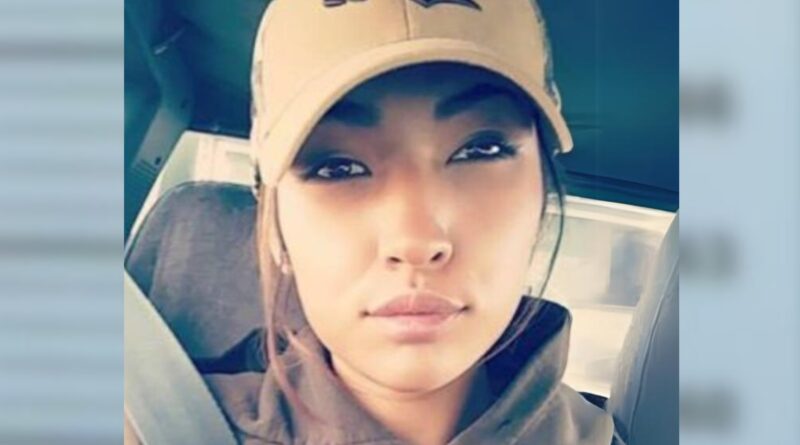Jermain Charlo Disappearance in Missoula Montana
The disappearance of 23-year-old Jermain Charlo on the night of June 15, 2018, in Missoula, Montana, remains one of the most puzzling and heartbreaking missing-person cases of recent years. A member of the Confederated Salish and Kootenai Tribes, Jermain was known for her warmth, creativity, and devotion to her young child. When she vanished from the alley behind The Badlander bar in downtown Missoula, friends and family were plunged into a frantic search that has stretched for years and involved tribal authorities, local law enforcement, volunteer search teams, and national media attention. Despite intense efforts, her fate remains unknown.
Early Life and Background
Jermain Charlo was born and raised on the Flathead Indian Reservation in western Montana. A proud member of the Confederated Salish and Kootenai Tribes, she grew up immersed in the traditions, stories, and close-knit community of her people. After high school, she moved to Missoula to pursue work opportunities and to find a fresh start, while maintaining strong ties to her family and reservation life. Jermain had one young daughter, whom she cared for deeply, and she often balanced part-time work, parenting, and community involvement. Friends describe her as resilient, compassionate, and fiercely protective of those she loved.
The Night of June 15, 2018
On the evening of June 15, Jermain went out for what she intended to be a casual night with friends at The Badlander, a popular bar in downtown Missoula. Surveillance footage shows her arriving shortly before closing time and socializing with acquaintances. Around 11:45 p.m., she was captured on camera speaking with her ex-partner, Michael DeFrance—the father of her child and a familiar presence in her life. Witnesses reported that the two appeared to be in conversation but that no altercation took place. Jermain and DeFrance then left the bar together, walking into an adjacent alley, which marked the last confirmed sighting of her.
Initial Investigation
When Jermain failed to return to her daughter’s care by early morning and did not respond to calls, her family first contacted tribal authorities on June 17. Two days after she was last seen, on June 20, her aunt formally filed a missing-person report with the Missoula Police Department. Investigators immediately reviewed security footage and interviewed bar staff and patrons. They catalogued Jermain’s known associates and retraced her steps, but no additional sightings were confirmed beyond the alley.
Michael DeFrance’s Changing Accounts
Michael DeFrance provided the primary account of Jermain’s departure from the bar. Initially, he told officers he had driven her to a nearby food market, dropped her off, and returned home. When police could find no record of her at that location, he revised his story, claiming he had left her on a residential block eight streets west. He mentioned a friend named “Cassidy” as her intended host, but no such person or address could be located. DeFrance also asserted that he discarded Jermain’s cell phone along Idaho’s Highway 12 several hours later—an assertion unsupported by recovery efforts. His inconsistent statements and proximity to the last known sighting have made him a focus of suspicion, though he has never been charged in connection with her disappearance.
Search Efforts and Community Involvement
In the weeks and months following Jermain’s disappearance, family members, tribal volunteers, and organizations such as The Lifeguard Group organized extensive ground searches. Teams combed densely forested hills, riparian zones, and abandoned structures around Missoula and on the Flathead Reservation. Canine units and cadaver dogs were deployed across rugged terrain. Local community centers hosted “flyer parties” where residents assembled and distributed thousands of missing-person flyers. In October 2018, the Salish and Kootenai Tribal Council sponsored a billboard along Highway 93 featuring Jermain’s photograph to keep her case in the public eye.
Tribal and Law Enforcement Coordination
Jermain’s disappearance highlighted jurisdictional complexities between tribal law enforcement and county authorities. Initially, tribal police led the investigation but soon invited Missoula County officers to assist, given the urban location of the disappearance. Detective Guy Baker of the Missoula Police Department was assigned to the case on June 26, 2018, ten days after the report was filed. Baker formed a joint task force, coordinating with the Confederated Salish and Kootenai Tribal Police, the FBI’s Tribal Special Investigator from the Portland office, and the Montana Department of Justice. Regular interagency meetings ensured that leads were shared and that search efforts were synchronized.
The Role of Cell-Tower Data and Forensics
Critical to the investigation was the analysis of Jermain’s cell-phone records. Carrier data placed her device pinging off towers on Evaro Hill—land owned by DeFrance’s family—between approximately 2 a.m. and 10 a.m. on June 16. DeFrance admitted to police that he had taken and later discarded the phone, but despite organized searches along the highways and tributaries of the Clark Fork River, it was never recovered. Forensic teams also collected and processed the last known clothing items recovered from the bar’s lost-and-found, though no definitive link to foul play emerged from laboratory analysis.
Legal Actions and Firearms Seizure
In October 2018, executing a search warrant on DeFrance’s Evaro Hill property, officers seized several firearms. Federal law prohibits him from possessing weapons due to a 2013 domestic violence conviction involving Jermain. While he was subsequently indicted and convicted in April 2023 for illegal firearms possession, the Ninth U.S. Circuit Court of Appeals vacated the conviction on December 30, 2024, due to a statutory mismatch in charging documents. Prosecutors have indicated they will pursue a retrial, but as of mid-2025, no new trial date has been set. DeFrance remains the primary person of interest.
Media Coverage and Public Awareness
National media outlets, including the television series “48 Hours,” have featured Jermain’s case, airing reenactments and interviews that have prompted viewers to come forward with tips. Podcasts and blogs focusing on missing and murdered Indigenous women have highlighted her story as part of a broader crisis. Social-media campaigns under hashtags like #FindJermainCharlo and #MMIW (Missing and Murdered Indigenous Women) have kept public attention alive, encouraging individuals with any fragment of information—no matter how small—to contact investigators.
Broader Context: Missing and Murdered Indigenous Women
Jermain’s disappearance is one among hundreds of cases of Indigenous women who vanish under mysterious circumstances each year in the United States and Canada. Advocates estimate that Indigenous women and girls face homicide rates nearly ten times higher than the national average. The lack of comprehensive data, combined with jurisdictional hurdles and under-resourcing of tribal law-enforcement agencies, has made resolving these cases especially challenging. Jermain’s family has joined coalitions pushing for greater federal oversight, improved cross-jurisdictional cooperation, and dedicated funding for search operations.
Current Status and Ongoing Efforts
As of June 2025, Jermain Charlo’s case remains unsolved. Detective Guy Baker continues to lead periodic reviews of the investigation, re-interviewing witnesses and following up on new leads. The search for physical evidence on Evaro Hill is slated for renewal in the late summer when snow melt exposes fresh ground. Tribal elders and community leaders maintain vigils and prayer gatherings on the anniversary of her disappearance, holding to the belief that Jermain is still alive or that her remains can be found. The family’s message endures: despite the passage of years, they will not relent until the truth of that June night is fully uncovered.
Discover more from City Towner
Subscribe to get the latest posts sent to your email.




